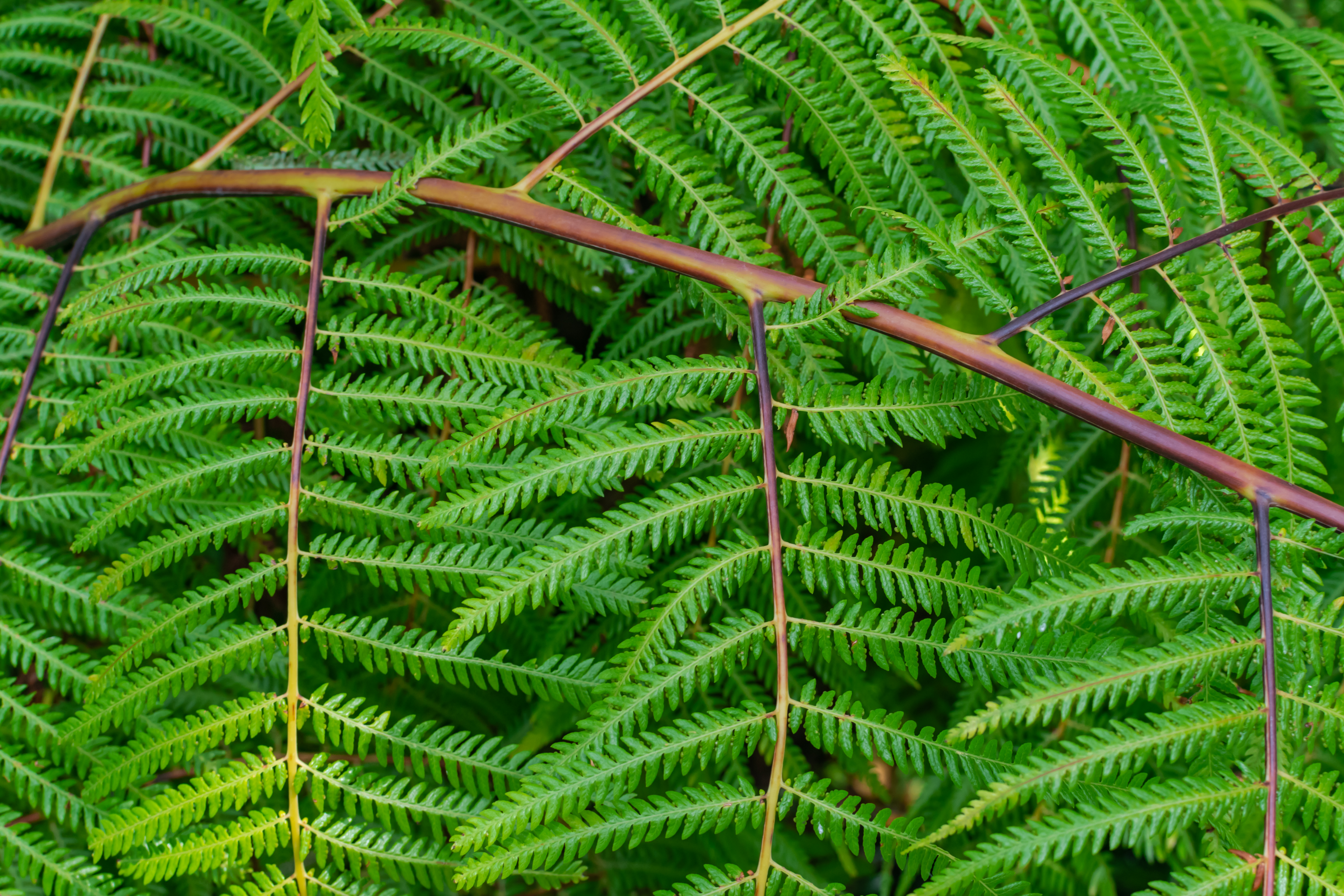Mexican tree fern
(Cibotium schiedei)

Description
Cibotium schiedei, commonly known as the Mexican tree fern, is a majestic plant species belonging to the family Cibotiaceae. This tropical fern is native to the cloud forests of Mexico and other regions in Central America. With its striking appearance, impressive size, and unique growth habits, Cibotium schiedei has captivated botanists, horticulturists, and plant enthusiasts alike. In this article, we will delve into the various aspects of this remarkable fern, including its taxonomy, morphology, habitat, and ecological significance. Taxonomy and Classification Cibotium schiedei was first described by the German botanist Heinrich Wilhelm Schiede in the early 19th century. It belongs to the kingdom Plantae, division Pteridophyta (ferns), class Polypodiopsida, order Cyatheales, and family Cibotiaceae. The genus Cibotium comprises approximately 14 species, with Cibotium schiedei being one of the most well-known members. Morphology Cibotium schiedei is a large-sized fern, capable of growing up to 10 meters in height, making it one of the tallest ferns in the world. Its trunk, known as the caudex, is thick and covered in a fibrous, brownish bark. The caudex often branches out near the top, giving rise to a crown of fronds. The fronds, or leaves, are pinnately compound, meaning they consist of multiple leaflets attached to a central axis. Each leaflet is leathery and lanceolate in shape, with a glossy dark green coloration on the upper surface and a lighter shade of green on the underside. Habitat and Distribution Cibotium schiedei is native to the highland cloud forests of Mexico, particularly in the states of Veracruz, Puebla, Oaxaca, Chiapas, and Guerrero. These forests are characterized by their cool temperatures, high humidity, and abundant precipitation, providing ideal conditions for the growth of this fern. Cibotium schiedei thrives in shaded areas with well-drained soils, often found on steep slopes and ravines. Outside its native range, this fern is also cultivated as an ornamental plant in botanical gardens and private collections around the world. Life Cycle and Reproduction As with other ferns, Cibotium schiedei undergoes an alternation of generations, transitioning between a sporophyte phase (the visible fern plant) and a gametophyte phase (the tiny, often inconspicuous prothallus). The sporophyte produces spores in specialized structures called sporangia, typically located on the undersides of mature fronds. Once the spores are released and land on suitable substrates, they germinate to form the gametophyte, which is a small, heart-shaped structure. The gametophyte carries both male and female reproductive structures, the antheridia and archegonia, respectively. After fertilization, the zygote develops into a new sporophyte, thus completing the life cycle of Cibotium schiedei. Ecological Significance Cibotium schiedei plays a crucial role in its native cloud forest ecosystems. The dense foliage of the fern provides shade and shelter for a diverse array of organisms, including epiphytic plants, insects, and small vertebrates. The fallen fronds contribute to the forest floor's organic matter, enriching the soil and supporting the growth of other plant species. Additionally, the extensive root system of CCibotium schiedei helps stabilize the soil on steep slopes, preventing erosion and landslides. The fern's ability to capture and retain moisture in its fronds contributes to the local water cycle, ensuring a more humid microclimate within the forest. These ecological interactions highlight the importance of Cibotium schiedei in maintaining the overall health and biodiversity of its habitat. Conservation Status and Threats The Mexican tree fern, Cibotium schiedei, faces several threats that have led to its declining population in the wild. Habitat destruction, primarily due to deforestation and conversion of cloud forests for agriculture or urban development, poses a significant threat. Illegal collection for the horticultural trade is another concern, as the fern's striking appearance makes it highly sought after by collectors. Additionally, climate change and the associated alterations in temperature and precipitation patterns may impact the fern's habitat suitability in the long term. Efforts are underway to conserve and protect Cibotium schiedei and its habitat. Conservation organizations work to raise awareness about the importance of preserving cloud forests and the species that depend on them. Protected areas and national parks have been established to safeguard the fern's natural habitat, enabling its continued survival. Research into the fern's reproductive biology, habitat requirements, and genetic diversity is ongoing to inform conservation strategies. Cultivation and Ornamental Use Cibotium schiedei is highly regarded as an ornamental plant due to its impressive size and striking appearance. Its large, architectural fronds make it a captivating addition to gardens, botanical collections, and tropical landscapes. However, the cultivation of Cibotium schiedei can be challenging, as it requires specific growing conditions to thrive. It prefers shaded locations with well-drained soil that retains moisture but does not become waterlogged. Regular watering and humidity are essential for its optimal growth. Propagation is primarily achieved through spores, but it can also be propagated through division of the caudex. Conclusion Cibotium schiedei, or the Mexican tree fern, stands as a remarkable plant species that contributes to the beauty and ecological balance of its native cloud forest habitats. Its towering stature, distinctive fronds, and significant ecological role make it a captivating subject of study and admiration. As we strive to protect and conserve the diverse flora of our planet, efforts to safeguard Cibotium schiedei and its fragile cloud forest habitats are crucial, ensuring the continued existence of this magnificent fern for future generations to appreciate and learn from.
Taxonomic tree:







